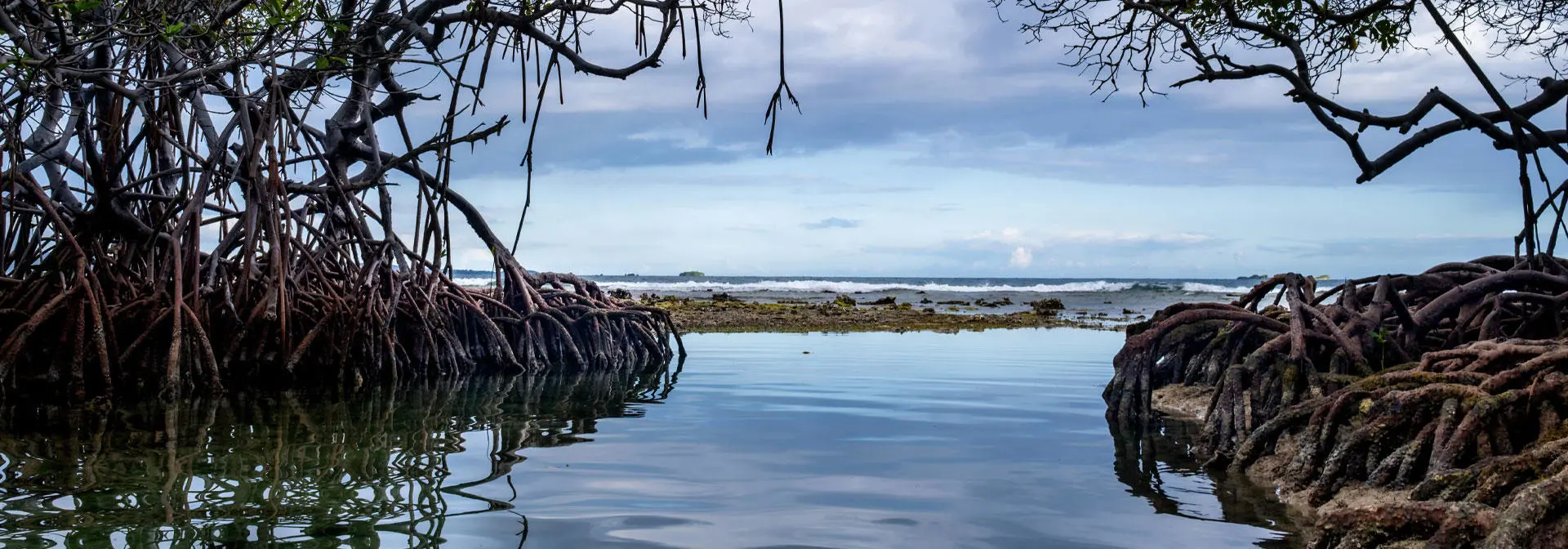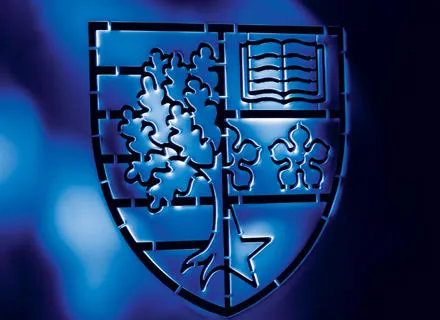Key information
This project will move forward understanding of particle-toxicant interactions and enhance knowledge of multiple factors that affect toxicity in a critically important relevant model organism of mangrove ecosystems.
- Funding
- Competition funded (Students worldwide)
- School
- Energy, Geoscience, Infrastructure and Society
- Location
- Edinburgh
- Award
- PhD
- Delivery type
- Full-time
- Supervisor
- Theodore B. Henry
- Closing date
- Friday, 9 January 2026
- Duration
- 44 months
This project is part of the NERC-funded Centre for Doctoral Training, ECOWILD.
For more details, and for a full list of projects offered under this programme, please visit: https://ecowild.site.hw.ac.uk/
Project Description
This project will build on our foundation of knowledge of the ecotoxicology of P. hawaiensis from the development of the model (laboratory husbandry and testing, molecular biology, pathology, and behaviour) and responses to chemical toxicants (metals, natural and anthropogenic particles, and PAHs) to incorporate the critically important aspect of substance-particle interactions and consideration of application of science in policy or conservation advice. Our focus in the laboratory will be on investigating how particles (select natural colloids, plastic particles, and engineered nanoparticles) interact with toxicants (polycyclic aromatic hydrocarbons (PAHs), dissolved metals) and influence their bioavailability via sorption/desorption reactions and the effects of changes in salinity on these processes.
Our purpose-built particle dispersion chamber enables particles to remain suspended in the aqueous phase and manipulation of toxicant concentrations, application of UV light (for photo-induction), at the same time toxicological responses are measured in model aquatic organisms. The model organism for this research is the circumtropical estuarine amphipod Parhyale hawaiensis which has emerged as a particularly useful organism for laboratory research with direct relevance to critically important aquatic ecosystems (e.g., mangrove wetlands). Bioavailability of toxicants will be assessed by a combination of methods that include changes in target gene expression, immunotoxicology (blood cells), and behavioural ecotoxicology. Opportunities will be available for field investigations to be conducted in either Brazil or Malaysia in which the project supervisors have existing research collaborations.
The student to be selected for this project will need to have some experience in both laboratory and field research with some aptitude for both molecular biology and behavioural toxicology. An interest in physical and analytical chemistry will be useful as will be an appreciation for the importance of tropical aquatic environments. The student will become part of an established international team of researchers investigating ecotoxicology of tropical aquatic ecosystems.
What do you need to know
The aquatic toxicity of substances is controlled largely by factors that influence their bioavailability and among the most important of these are interactions with particles. Toxic substances sorb and desorb to particles in the aqueous phase and undergo transformation reactions mediated by photoactivation and microbial processes. As particles with sorbed toxicants are transported to river mouths and mangrove wetlands, rapid changes in salinity can alter toxicant-particle associations and affect toxicant bioavailability. Our established tropical amphipod model Parhyale hawaiensis and purpose-built particle-toxicant dispersion test chambers enable investigations into these critically important and understudied questions of environmental toxicology. The lead supervisor has existing research projects and long-term research collaborations with colleagues working with this model organism within mangrove ecosystems, which will provide access to these sites for field investigations.
What expertise and skills will the student develop?
The student will develop expertise in particle-substance interactions, assessment of toxicant bioavailability and toxicity, and ecotoxicology methods at multiple levels of biological organization including molecular biology (gene expression analyses), tissue (histopathology), and whole organism (behavioural toxicity). The student will also be able to develop competence in physical chemistry including aqueous-phase particles and analytical chemistry. The main project supervisor has long established research collaborations with supervisor in Brazil (Prof GA Umbuzeiro) and a joint academic appointment at the University of Campinas (Campinas, Brazil), and close partnerships with colleagues in Malaysia in which some research opportunities in tropical ecotoxicology will be available.
Why is the project novel?
The importance of particle-substance interactions on the bioavailability of toxicants to aquatic organisms are recognised as among the most critical and poorly understood areas of ecotoxicology. Our previous research has demonstrated the influence aqueous-phase particles on toxicant bioavailability, toxicant decomposition, and toxicant photo-induction and degradation/decomposition. This project will employ state-of-the-art techniques to enhance understanding of particle-toxicant interactions relevant to mangrove wetlands which are among the most threatened ecosystems in the world. The project will inform ecological protection and identify areas of interest for international conventions such as Ramsar and UN Environment Programme for tackling pollution in mangroves.
What real-life challenge does it address?
Mangrove ecosystems face mounting threats from the triple planetary crises of pollution, climate change and biodiversity loss. Particle-toxicant interactions result in complex scenarios in which toxicants are transformed and traditional ecotoxicity tests that do not include the influence of particles on toxicant bioavailability have limited ability to predict toxicity. This project will move forward understanding of particle-toxicant interactions and enhance knowledge of multiple factors that affect toxicity in a critically important relevant model organism of mangrove ecosystems. Findings will inform environmental policy, enhance risk assessment frameworks, and support conservation strategies for mangroves, critical buffers against climate impacts and biodiversity decline.
Timelines
The closing date for applications is 17:00 BST Friday 9 January 2026, and applicants must be available to start in October 2026.
Project supervisor
Lead Supervisor: Theodore Henry (Heriot Watt University)
Stakeholder Supervisor: Isabella Gosetto (Joint Nature Conservation Committee (JNCC))
Co-Supervisor 1: Teresa Fernandes (Heriot Watt University)
Co-Supervisor 2: Alistair Boxall (University of York)
Co-Supervisor 3: Gisela Umbuzeiro (Faculdade de Technologia)
For more information on how to apply, please visit the ECOWILD website:
Project specific enquiries: T.Henry@hw.ac.uk, General enquiries: ecowild@hw.ac.uk
Entry requirements
Candidate criteria
Eligibility
This project is available to home and overseas students. International candidates may apply but if successful, will need to demonstrate that they (or their supervisory team) have co-funding to cover the difference between home and international fees to be eligible. The difference in fees varies by programme. The current difference for 2025/26 academic year is approximately £20,000 per year.
Applicants typically should have a first or upper second-class honours degree or equivalent in an appropriate subject and preferably a relevant Masters’ qualification or similar experience.
We recognise that not every talented researcher will have had the same opportunities to advance their careers. We therefore will account for any particular circumstances that applicants disclose (e.g. parental leave, caring duties, part-time jobs to support studies, disabilities etc.) to ensure an inclusive and fair recruitment process.
English language requirements
If your first language is not English, we'll need to see evidence of your English language ability.
The minimum English language requirement for entry to this programme is IELTS 6.5 (or equivalent) with no score lower than 6.0.
If you do not have IELTS 6.5, we offer a range of English language courses to help you meet the English language requirement for this programme prior to commencing your studies.
For more information about your application and our English Language requirements, please see Section 10 of our page on English Language Requirements as part of your application.
Funding information
This is a full scholarship which will cover tuition fees for Home students and provide an annual stipend in line with UKRI recommended levels (currently £20,780 in 2025-26) for the 44 months duration of the project.
International candidates may apply but if successful, will need to demonstrate that they (or their supervisory team) have co-funding to cover the difference between home and international fees to be eligible. The difference in fees varies by programme. The current difference for 2025/26 academic year is approximately £20,000 per year.
Why Heriot-Watt
We're the top university in Scotland for graduate outcomes which means that more of our graduates are employed or in postgraduate education than any other institution in the country and we ranked 5th in the UK.
We're also rated number one in the UK for CEO or MD roles, meaning more of our graduates go on to become CEOs or MDs than any other university in the whole of the UK. On top of that, we have beautiful campuses, across the globe, so you'll get a truly international education. Our Edinburgh Campus is home to Oriam, Scotland's National Sports Performance Centre combined with plenty of wellbeing resources, prioritising fitness and mental health for all students. Our Global Research Institutes look at solving real world issues such as climate change and saving our oceans as well as working on the next medical technological breakthrough and the future of AI and robots.

